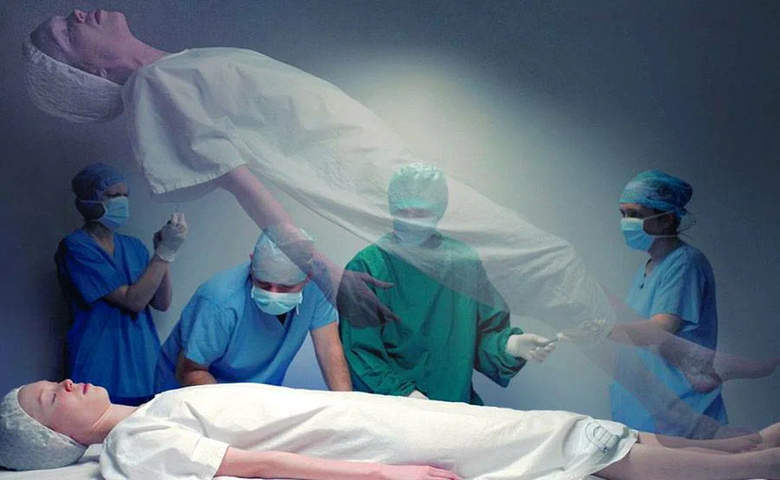This is a question paramedics frequently hear. Can you bring someone back to life after death? You may be surprised to learn that the answer to this question is Yes! The patient can’t be too dead, obviously. This is a survival issue. People are always eager to know about can you bring someone back to life after death?
The first step is determining if we’re talking about clinical death or biological death. Although both terms imply that the patient is technically dead, they both signify a distinct degree of permanence. One may be fixed, but the other cannot. Here, we will explore about is it possible to bring someone back to life after death in detail.
Table of Contents
Clinical Death
The first stage of death is clinical, which occurs when blood flow and respiration cease. Clinical death is the same as a cardiac arrest because both the heart and the blood flow have stopped. Within a few seconds, after the heart stops beating, breathing and consciousness will halt. The clinically dead can be revived. The time between cardiac arrest and the onset of severe brain damage, according to researchers, is only four minutes.
The patient may recover from clinical death if blood flow can be restored, either through cardiopulmonary resuscitation (CPR) or by restarting the heart. CPR has rather pitiful success rates, so it’s not a guarantee. It is crucial to remember that the use of CPR and an automated external defibrillator (AED) dramatically boosted the likelihood of survival. Clinical death does not spell the end, but you must move rapidly.
Biological Death
Biological death, on the other hand, results in brain death, and brain death cannot be undone. That is death beyond recovery. However, it is possible to keep the body alive while the brain is dead, which just adds to the complexity. The heart functions without being directly supervised by the brain.
Since the heart beats independently of the brain, it is possible to maintain a heartbeat even after the brain has stopped functioning. Yes, that is one method by which organs are donated. Emergency medical personnel utilise physical indicators of irreversible death to determine whether to do CPR on a victim of cardiac arrest. The harsh reality is that some persons are already dead when they are discovered.
How Long Can a Dead Person be Brought Back to Life?
Now you will find the answer to the question below, can you bring someone back to life after death?
It’s difficult to say. There have been numerous cases of individuals whose hearts have stopped beating who afterwards spontaneously regain their vital signs. One such case occurred in Spain in December 2019 when a 34-year-old woman was declared clinically dead for six hours. Such cases are believed to occur frequently because a severe drop in body temperature avoids cell damage, which results in biological and irreversible death.
A phenomenon when a person who appears to have passed away from a cardiac arrest suddenly awakens. Delayed restoration of spontaneous circulation is the medical term (ROSC). In 1993, it was first used. According to several studies, more people than previously thought have “come back to life” after their hearts have stopped beating.
Cardiac arrest is the hallmark of death. It’s the moment when the heart stops effectively pumping blood around to the muscles and tissues of the body, especially the brain. This is the moment when every patient dies. Cardiac arrest is recognized by the cessation of a pulse and of breathing.
With proper CPR and possibly defibrillation, a person in cardiac arrest can sometimes be saved. There is a limit, however. Resuscitation doesn’t always have the potential to work.
Prolonged cardiac arrest or certain types of trauma that are just not survivable are considered insurmountable and attempts to resuscitate the person won’t be successful.
In the event of prolonged cardiac arrest, brain death (also known as biological death) is considered the absolute point of no return.
Some patients with cardiac arrest are simply not going to be resuscitated, no matter how hard rescuers try. Cellular damage gets worse over time as the cells are not fed nutrients or oxygen, and as they build up toxins and carbon dioxide that needs to be removed.
The longer someone stays in cardiac arrest, the less likely they are to be revived with CPR or advanced treatments.
What Takes Place Right before Death?
After learning about is it possible to bring someone back to life after death, we will discuss what takes place right before death.
Death is not always a painful experience. Others pass away painlessly, but those with particular medical conditions may experience pain when they pass away. People with terminal illnesses, such as cancer, frequently receive pain medicine to make them more comfortable as they pass away.
The time when the heart stops beating and the breathing stops is frequently thought of as the moment of death. However, it takes time for that death to occur. Our brains are thought to continue functioning for around 10 minutes after we pass away, which suggests that they may be aware of our passing.
Doctors in hospitals employ a few criteria to determine when someone has passed away. The absence of a pulse, respiration, reflexes and pupil contraction in response to strong light are a few of these. When there is no chance of revival in an emergency situation, paramedics seek the five indicators of irreversible death.
By definition, a person dies either when their heartbeat and breathing stop permanently, or they experience brain death, in which case their entire brain, including their brainstem, stops working. The decision must be made in accordance with recognised medical norms.
What Happens Physically When a Person Dies?
To understand about is it possible to bring someone back to life after death, you must know what happens physically when a person dies.
It is normal to be curious about what occurs after death. Physically speaking, death happens when all of the body’s essential processes—including breathing, heartbeat, and, ultimately, brain activity—stop. The process of dying, during which these processes cease, sometimes gradually and other times abruptly, includes the actual moment of death.
The body transforms after death in a predictable sequence as the body temperature declines, the colour and texture of the skin change, and the muscles relax, stiffen, and then relax once again.
One Hour after Death
When a person passes away, all of their muscles relax, a condition known as primary flaccidity. The body’s joints and limbs are flexible, the eyelids loosen, the pupils enlarge, and the jaw may open.
The skin will sag as a result of the muscles losing their tension, stressing prominent joints and bones in the body like the hips and jaw. Sphincters loosen as muscles relax, allowing the passage of urine and faeces.
The body becomes paler minutes after the heart stops as the blood drains from the skin’s tiny veins, a condition known as pallor mortis. People with lighter skin may be more susceptible to this procedure than individuals with a darker complexion.
Over the course of an average lifespan, the human heart beats more than 2.5 billion times, pumping 5.6 litres of blood through the circulatory system.
The body starts to cool simultaneously from its normal temperature of 98.6 F (37 C) to the ambient air temperature. The term “death cold” refers to a condition where the body temperature drops at a constant pace of 1.5 degrees Fahrenheit per hour.
If the body hasn’t entirely cooled or been exposed to extremely hot or cold conditions, the anticipated drop in body temperature during algor mortis can aid forensic investigators in estimating the time of death.
Two to Six Hours after the Death
Blood starts to pool in the bodily parts closest to the ground because the heart is no longer pumping blood there, a condition known as livor mortis.
A reddish-purple discolouration resembling a bruise can form on the body parts closest to the ground if the body is left unattended for several hours due to blood buildup.
The process of all the muscles tightening up after death, known as rigour mortis, starts about the third hour after death due to chemical changes occurring within the body’s cells. The eyes, jaw, and neck muscles are the first to be impacted by rigour mortis.
Rigomortis will progress over the face, chest, abdomen, arms, and legs during the next several hours before reaching the fingers and toes.
It’s interesting to note that the old custom of placing coins on the dead person’s eyelids may have started out of a wish to keep the eyes closed because rigour mortis affects them the fastest. Additionally, it is common for newborns and young children to die without exhibiting rigour mortis; this may be because of their reduced muscle mass.
Seven to Twelve Hours after the Death
Rigomortis causes the body’s muscles to stiffen up to their maximum extent after around 12 hours, albeit this depends on the individual’s age, health, gender, air temperature, and other factors.
The deceased’s limbs are now stiff and difficult to move or operate. The fingers or toes may appear strangely crooked, and the knees and elbows will be slightly bent.
More Than Twelve Hours after the Death
The muscles will start to loosen as internal tissue breakdown and ongoing chemical changes within the cells cause the body to achieve its maximal level of rigour mortis. Secondary flaccidity is a process that lasts one to three days and is influenced by environmental factors including temperature. Processes are slowed down by cold.
The skin will start to contract during secondary flaccidity, giving the appearance that hair and nails are sprouting. Then, over the course of up to 48 hours, rigour mortis will fade in the reverse direction, from the fingers and toes to the face. All of the body’s muscles will be relaxed after secondary flaccidity is over.
I hope, now it is helpful to understand about is it possible to bring someone back to life after death.
Frequently Asked Questions
1. Can someone come back to life after death?
The patient may recover from clinical death if blood flow can be restored, either through cardiopulmonary resuscitation (CPR) or by restarting the heart.
2. What happens to a body immediately following death?
All muscles immediately begin to relax, and the body becomes limp. Additionally, the body releases pee and excrement as the sphincters loosen. Also, the body temperature starts to drop and the skin tone turns pale.
3. How long has someone been dead before coming back to life?
The longest period of cardiac arrest followed by successful resuscitation and full recovery is 17 hours.
4. Which body component dies first?
Organs shut down at varying rates as a person ages. For instance, the heart usually stops beating before the lungs do. The brainstem may quit working before other organs in some people. The brain dies as a result of this. But according to a study, some brain activity may last for up to 10 minutes after a person passes away.
5. What does a person see before they pass away?
Seeing a bright, white light is one of the most frequent and well-known near-death experiences for those who die and come back. This white light has a calm or even joyful quality to it. There are numerous theories regarding the meaning of bright light.
6. How long does the heart continue to beat after death?
The longest period of time the heart has ever stopped before automatically restarting is four minutes and 20 seconds. The longest period of time after a restarting heartbeat was 27 minutes, however, most restarts only lasted one to two seconds.
Can someone hear you after they pass away?
Yes, according to the medical community even when all other senses have failed, a dying person will still be able to hear and understand their environment.
8. How long does a dead person’s body remain warm?
The body starts to become cooler right away, but the temperature declines gradually, by 1.5 degrees F per hour.
9. What occurs in the initial minutes following death?
The heart eventually quits, and the person ceases breathing. Their brain completely shuts down after a few minutes, and their skin begins to chill. They have passed away by this time.
10. Could you survive a 20-minute period without a beating heart?
The brain typically sustains irreversible damage if someone remains without a heartbeat for more than 20 minutes, according to medical professionals. But we can prevent this with competent CPR and attentive post-resuscitation treatment.
Image credit: Yandex.com
Also Read: Where Does the Soul Go Just After Passing Away?















